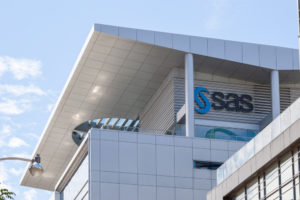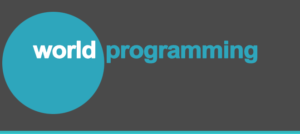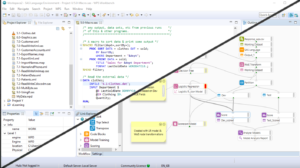
Altair Gives Legacy SAS Code a New Place to Run

(ArtemisDiana/Shutterstock)
American companies that have relied on SAS-based data analytics routines for decades but would like to separate themselves from the SAS Institute and its maintenece fees may be interested in another SAS runtime option that recently became available from Altair.
For decades, SAS Institute was the dominant provider of analytics software, based on the widespread use of the Statistical Analysis System (SAS) language that its co-founders, including SAS CEO Jim Goodnight, created in the late 1960s at North Carolina State University. The SAS code and SAS Institute’s tools and runtime engines spread into all industries, cementing themselves as the undisputable standard for corporate analytics in the US and abroad.
But that analytic hegemony has been tested in recent years thanks to the rise of open languages like Python and R. The meteoric rise of Python, in particular, has many companies casting their analytic bets with the uber popular scripting language, which can be used to program a slew of data-related tasks, including data engineering, analytics, and AI.
SAS–the Cary, North Carolina company–has made inroads with the open analytic community. The company, which boasted 83,000 customers in 147 countries supports just a few years ago, has supported Python in AI and analytic libraries in Viya, its modern flagship offering that it’s encouraging its giant installed base to migrate to.

SAS is considered to be the world’s largest privately held software company, with 2019 revenues of $3.1 billion (JHVEPhoto/Shutterstock)
However, by all accounts, there remains a sizable group of SAS customers with large amounts of SAS code that has not been moved into Viya. Much of this SAS code has run reliably for decades on platforms ranging from Windows desktops to giant IBM System Z mainframes and Power servers. In many cases, the original SAS developers have long since left the companies, leaving efficient and reliable SAS code as their legacy.
While many of these customers would prefer to have their routines in a more “modern” environment like Python, that’s not an easy journey. The lack of good code converters means that a move from SAS to Python is practically a rewrite, which raises red flags for risk-averse corporations. As a result, many of these companies are loathe to touch the SAS code, and they continue to pay licensing fees to the SAS company for the right to execute it.
It’s a classic case of “If it ain’t broke, don’t fix it,” according to Mark Do Couto, senior vice president of data analytics at Altair Engineering.
“For the most part, a lot of the organizations are just leaving that component of the business as-is,” Do Couto said. “They just continue to hit the run button, so they know it works, and they know they can get the output. And they continue to work with SAS to keep things status quo.”
Compiler and Runtime Alternative
About 20 years ago, a UK company named World Programming decided to go head-to-head with the analytics giant SAS. The company devised a compiler and a runtime for SAS code, called WPS Analytics, and began selling it to SAS customers in the UK’s finance, telecommunications, and healthcare industries.
Eventually, World Programming began selling to companies in Asia who wanted an alternative to the official runtime from SAS. Hundreds of companies in Europe and Asia eventually were users of the SAS runtime alternative.
SAS did not take the challenge sitting down. The company sued World Programming in Europe and the US. All of the lawsuits in Europe were resolved in World Programming’s favor, according to Do Couto, while SAS won one legal challenge in the US (which hinged on the copying of SAS Institute support materials into WPS support documentation). That case resulted in an injunction against the company operating in the large US market, which World Programming had never successfully penetrated.
When Altair acquired World Programming for an undisclosed sum in December 2021, it was fully aware of the company’s legal situation. Earlier this year, Altair paid the remainder of the balance due on the US legal settlement, and a judge in March cleared the way for sales to resume, according to Do Couto. “So Now Altair has green light to sell it to all of our customers and potential customer across the world,” he said.
The WPS environment is remarkably good at compiling and running SAS source code without many changes, according to Do Couto.
“It’s not 100%. It’s in the 90s–92% to 93%,” he told Datanami in a recent interview. “The things that don’t run are either syntax errors, a challenge in the way the code was originally written, or a very small amount of procedures that SAS has in their language that are very rarely used.”
When customers do run into unsupported procedures, the WPS team typically will work to support it in the compiler and runtime, Do Couto said. That has been the World Programming business model for years.
The savings that customers can get by moving to the WPS environment and eliminating the SAS maintenance fees is one thing. But such a move can also free up SAS code to run on bigger, newer machines that customers have been hesitant to install for fear of triggering even bigger price increases, according to Do Couto.
“Their annual license fee is probably going up 2% to 3% or whatever CPI might be for them,” Do Couto said. “But they know if they upgrade their hardware, there’s probably going to be a software cost increases because of the hardware component. So this gives our customers the opportunity to finally upgrade that hardware and not do it at the detriment of a potential license fee increase.”
Opening SAS
Altair supports the WPS SAS runtime on industry standard servers, as well as IBM mainframes and Power boxes running IBM i, AIX, and Linux operating systems. These “big iron” platforms have their own legacy application challenges that customers are dealing with, so it’s not surprising that SAS code that has successfully run OLAP routines for customers for decades are grouped in with legacy ERP and OLTP systems that corporations are eager to modernize and refresh.
“Some of the biggest logos out there, we know they have run SAS for years,” Do Couto said. “They have SAS in their environment. A lot of it is legacy code that’s stuck into their ETL, their reporting, their dashboarding. And it’s basically on its own internal run cycle. Nobody is really doing anything with the code. They’re just running it.”
The ability to essentially copy and paste that aging SAS code into a new runtime and get out from under the obligation of paying SAS maintenance fees is likely to be something that SAS customers give some thought. Many will likely stay with SAS, which has made some enhancements to the language but is really focused on getting customers to move to Viya. For others, a move away from SAS may be the right one.
“For us, it’s a huge opportunity,” Do Couto said. “We don’t know the exact cost of every single renewal and contract that these organizations have with SAS. But we can imagine it’s fairly large. And giving customers a choice of where they can run the code without redoing it–it’s exciting for us and it’s exiting for our customers.”
The New Legacy
With the legal issues behind it, Altair is eager to begin selling into the massive SAS installed base, particularly in the US, which has never really been touched by World Programming’s offering. The Troy, Michigan, company is touting its licensing model that revolves around Altair Units–which allows customers to use any of the Altair data analytics products–as another benefit that will bring value to former SAS customers.
“So not only do they get access to the code engine, if you will, but they also get access to our data preparation tool, data science tools, our visual dashboarding tool, and our SmartWorks tool that’s cloud native,” Do Couto said. “It’s not only giving them the flexibility to run that code, but it’s the flexibility of looking at a whole platform and product portfolio.”

Python may be the standard for current data projects, but the installed base of SAS code is immense and won’t likely be converted anytime soon (dTosh/Shutterstock)
Altair has started to more deeply integrate the SAS code into its existing environment. Companies can already work with SAS code in Knowledge Studio, the company’s data science platform, which gives customers the ability to work in SAS and even export predictive models in the SAS language that can subsequently be executed on the WPS kit. And it’s currently working to integrate the SAS language more deeply with SmartWorks.
Somewhat ironically, the whole World Programming exercise has resulted in Do Couto gaining a greater degree of respect for the SAS language environment. Do Couto, who was already familiar with the WPS environment while working at Agnoss (which was acquired by Datawatch in 2018 just before Altair bought Datawatch), has a new perspective on SAS’s continued relevance in the modern Pythonic age.
“I’ll be honest. Originally when I was going through this, [I thought] Python was the way of the future,” he said. “Python was the code that was better. Everyone you talk to has said that. It makes a lot of sense. It’s continually being enhanced with the community. Obviously it’s great….[But] there are things that just run better and more efficiently in SAS than Python.”
Considering how big a lift moving from SAS to Python will be for most companies–especially the large American corporations with hundreds of thousands of lines of SAS code that have run reliably, day in and day out, for decades–Altair will be quite happy to continue to give customers the support they need to move to Python or to just keep running the existing SAS code.
“We’re giving them an environment where they can see, is [Python] going to perform better than what they’re already doing in that already-written SAS language code that they have?” he said. “There may be some things that don’t make sense to move or transition over.”
At a recent Gartner event that Do Couto attended, analysts urged caution in moving too quickly from SAS to an all-Python environment.
“If you do a full transition to Python and you’re in an all-Python environment, what is 15 to 20 years from now going to look like?” he said. “Is there going to be another code language, and is their Python code environment going to be the same challenge that customers have now with their SAS language?”
At the end of the day, the SAS legacy will stand as one of the greatest in the history of data analytics. But as Dr. Goodnight nears retirement, there are questions about what will become of the company that he has successfully led for so many years. No matter how solid the SAS products are, the tide of open source analytics, and Python in particular, are pulling against the company. How long will that last? Only time will tell.
But thanks to its acquisition of World Programming, Altair is positioned to let customers continue to run their SAS code, or transition to newer coding environments. Giving customers a choice in analytics environment makes good business sense for Altair and its customers, Do Couto said.
“We don’t want our customers to feel like they need to be siloed in one code environment. We think a multi-code environment makes a lot of sense and there’s a lot of value to that,” he said. “We’ve always been pro open source and pro-choice, and giving our customers an environment that they have that flexibility–that’s what we’re going to lead with and want our customer to be trained in, and understand that once it’s in there running, then you can make decisions for the future.”
Related Items:
Altair Launches Unified Environment for HPC, Analytics, CAE, and AI
Altair Shows Off Converged Analytics Lineup
SAS Charts AI Future, But Doesn’t Forget Analytics Past



























